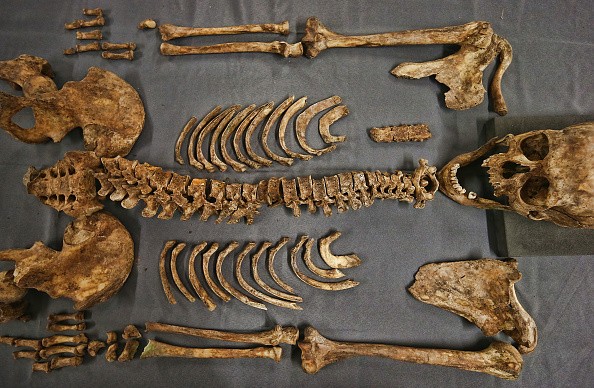The risk of death from an encounter with a shark may be awfully overemphasized in well-known culture, but that's likely a little consolation to a man who lived and passed away 3,000 years ago. His remnants now represent the oldest known shark victim ever discovered.

The Victim
The victim had a particularly nasty encounter with one of the marine predators, in the Seto Inland Sea of the Japanese archipelago, according to an analysis of his bones. Almost 800 injuries scored his skeleton, none of which revealed any signs of healing - strongly suggesting that the encounter was a deadly one.
The bones, retrieved from the Tsukumo Shell-mound archaeological site close to the Seto Inland Sea, were initially excavated early in the 20th century CE, but an explanation for the victim's wounds remained difficult to discover.
Then, archaeologists J. Alyssa White and Rick Schulting of the University of Oxford in the UK, who were carrying out an investigation on violence in prehistoric Japan rediscovered the bones.
They said: "We were flummoxed at first by what could have caused not less than 790 deep, serrated injuries to this man. There were a lot of injuries and yet he was buried in the community burial ground, the Tsukumo Shell-mound cemetery site."
Also Read: Rising Number of Shark Attacks in Australia Reveals A Darker Story
Tsukumo No. 24
J. Alyssa White and Rick Schulting added, saying that the injuries were mainly noticed in the legs, arms, and front of the chest and abdomen. And through a process of elimination, they ruled human conflict out and more commonly-reported animal predators or scavengers.
The lesions on the bones of the victim, referred to as Tsukumo No. 24 only, were surely curious. They were curved, and sharp-edged which the researchers discovered inconsistent with the stone tools in use at the time. Additionally, his left hand and right leg were nowhere to be found, and his left leg had been kept on top of his body in an upside-down position for burial.
Shark encounters are hardly seen on the archaeological record, but the injuries didn't appear to match any other kind of animal encounter either.

Carcharodon carcharias Vs. Galeocerdo cuvier
The archaeologists turned to George Burgess, a marine biologist of the Florida Museum of Natural History's Florida Program for Shark Research, and also records of shark encounters, to know if No. 24's wounds correlate there.
White and Schulting said: "Given the wounds, he was obviously the victim of a shark attack." White and Schulting added that the man may well have been fishing with mates at the time, since he was quickly recovered.
And, based on the distribution of tooth marks and the character the most likely species responsible was either a white shark (Carcharodon carcharias) or a tiger (Galeocerdo cuvier). It was not possible to narrow the species down further, because the bite marks are so many and overlapping that a diagnostic jaw shape cannot be concluded.
Related Article: Bones of Mysterious 'Giant Cloud Rats' Discovered in a Cave in Philippines
For more news, updates about shark encounter and similar topics don't forget to follow Nature World News!
© 2025 NatureWorldNews.com All rights reserved. Do not reproduce without permission.





